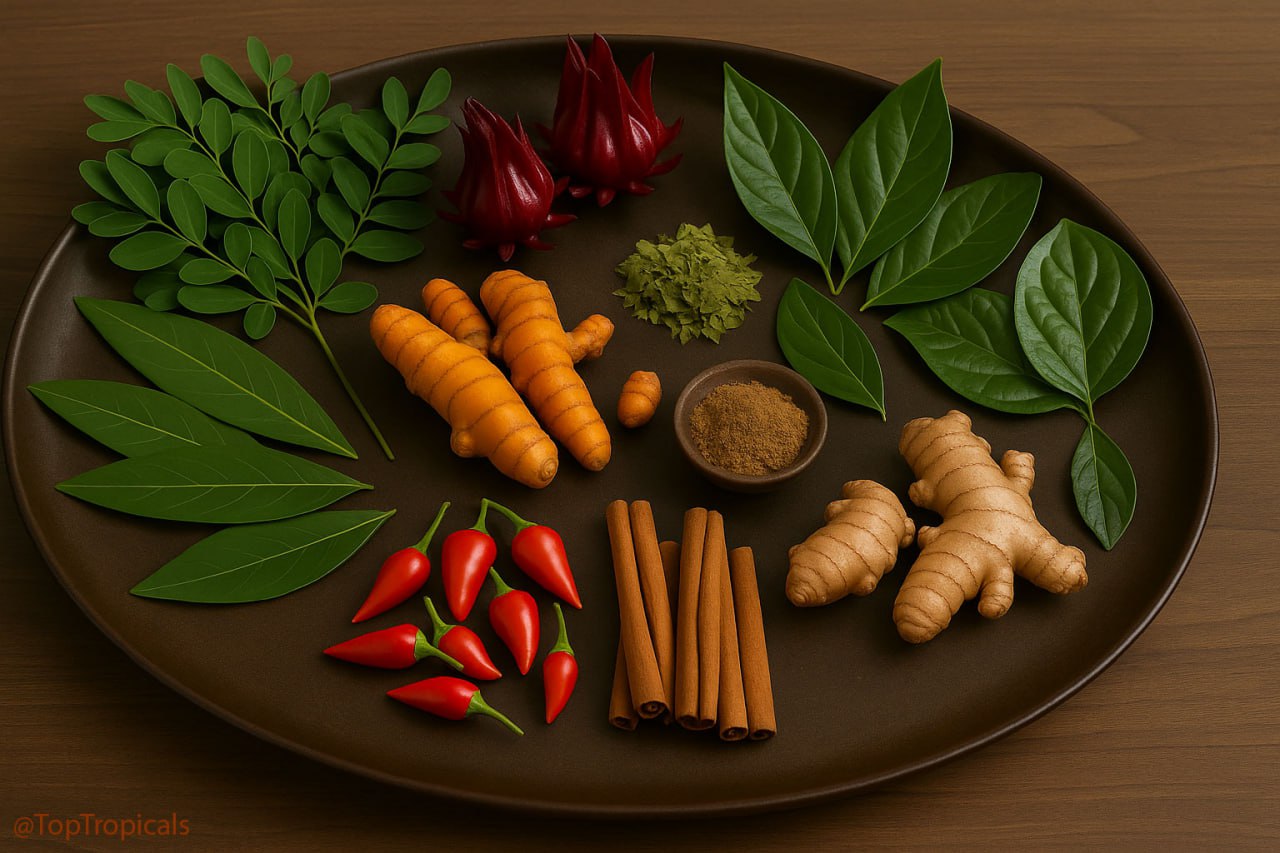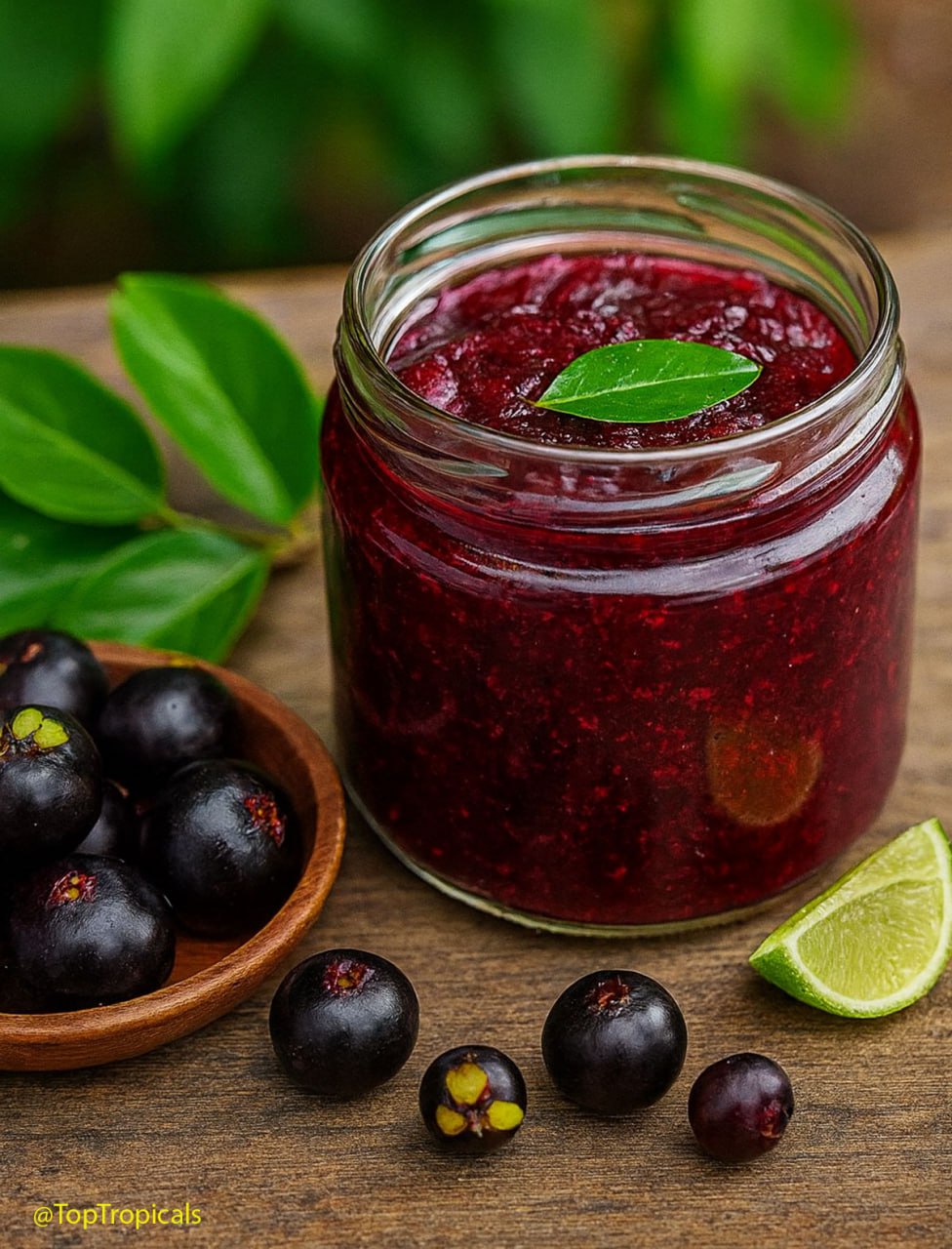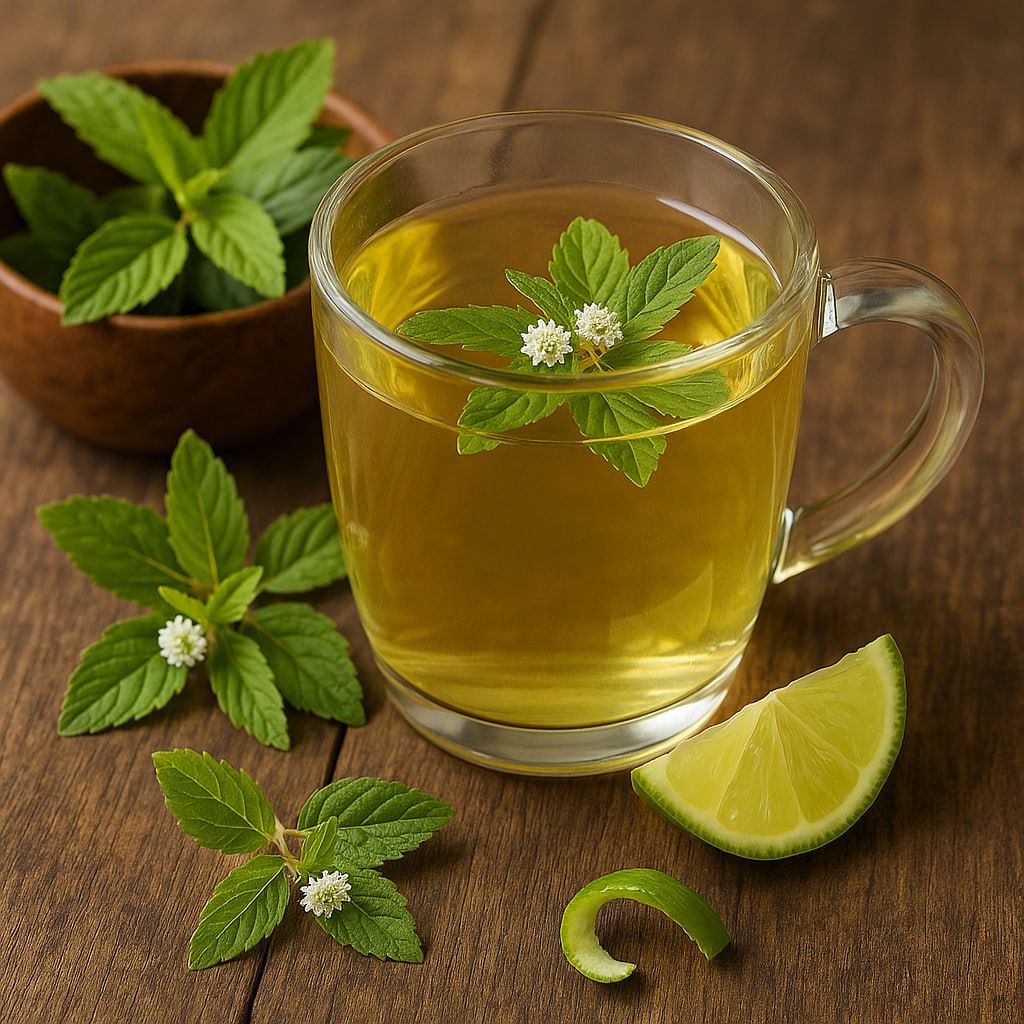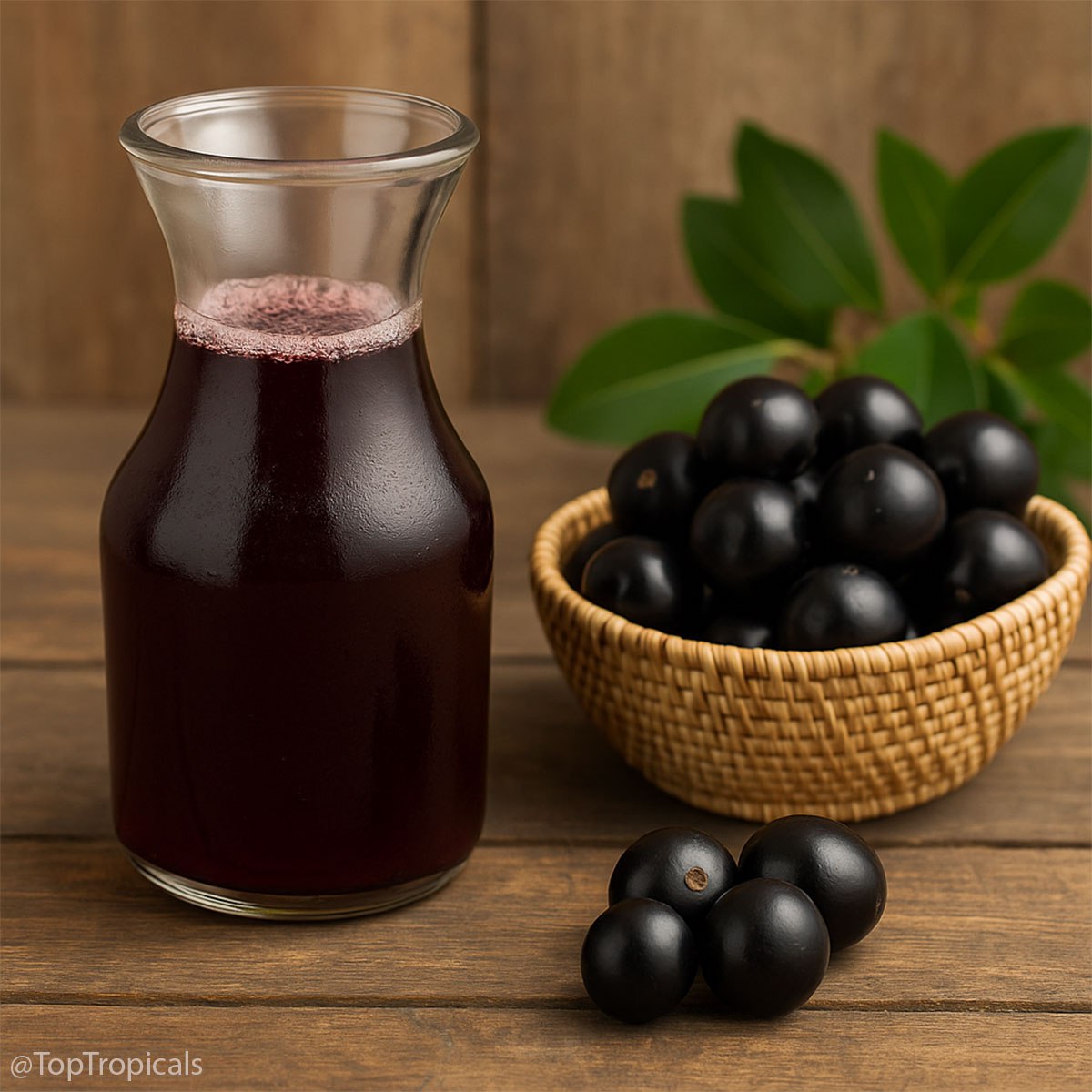Garden Blog - Top Tropicals
Fun Facts: Cacao beans
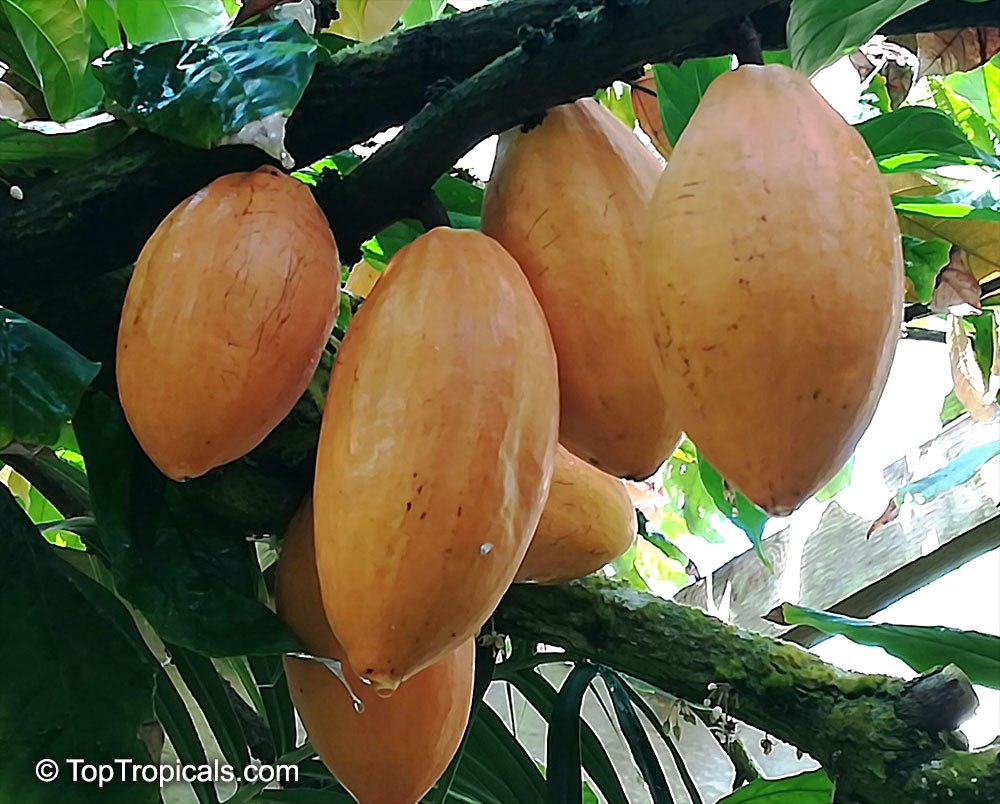
Cacao Chocolate Tree (Theobroma cacao)
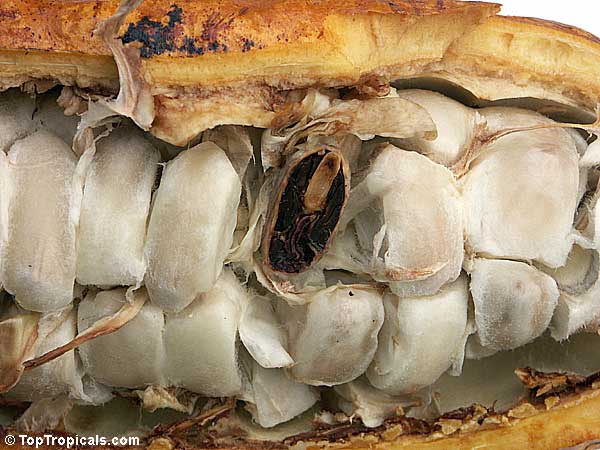
Cacao Chocolate Tree (Theobroma cacao)
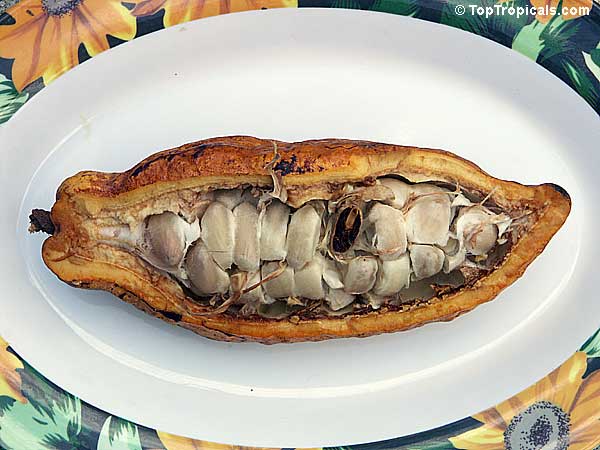
Cacao Chocolate Tree (Theobroma cacao)
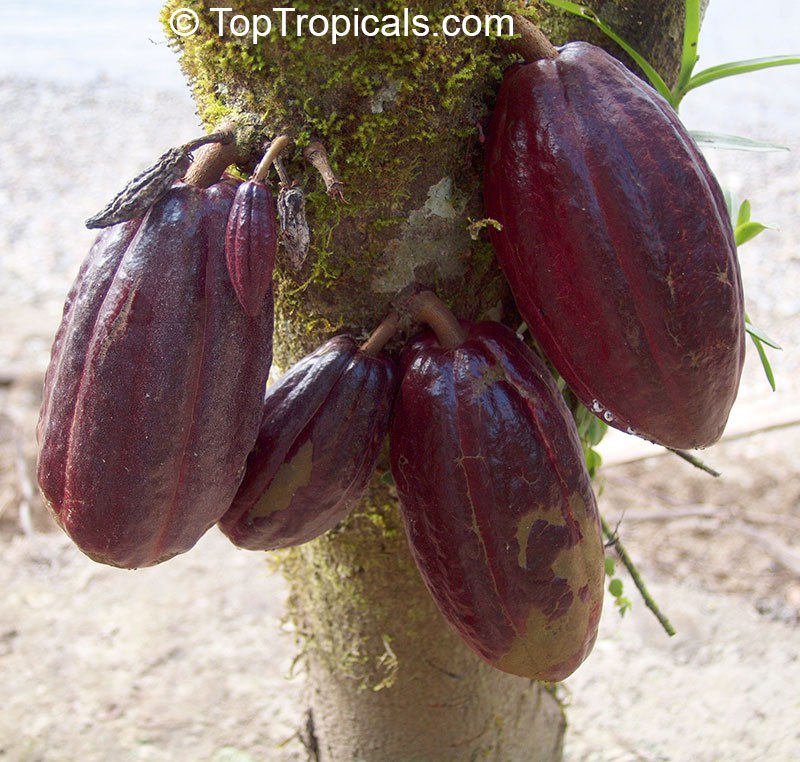
Cacao Chocolate Tree (Theobroma cacao)
🛒Get your own Chocolate Tree
#Fun_Facts #Food_Forest
JOIN 👉 @TopTropicals
Fun Facts About the Guava Flower
Guava Flower
- 🌸 Frilly and Fabulous - Guava flowers may be small, but they're packed with fluffy white stamens that give them a soft, powder-puff look.
- 🌸 Pollinator Magnet - Bees and butterflies love guava blooms, making them a great addition to a pollinator-friendly garden.
- 🌸 Scent-sational - The flowers have a light, pleasant fragrance that adds a touch of sweetness before the fruit even arrives.
- 🌸 Bloom to Fruit - Each flower can turn into a delicious guava fruit, making them both beautiful and productive.
- 🌸 Part of the Showy Family - Guava (Psidium) belongs to the Myrtaceae family, which also includes eye-catching bloomers like Eucalyptus, Bottlebrush (Callistemon), and the stunning Rose Apple (Syzygium).
📚 More from previous posts about: #Guava
🛒 Shop Guava Trees
#Food_Forest #Guava #Fun_facts
🔴 Join 👉 TopTropicals
What edible plants and herbs can reduce your blood pressure. Tropical fruit and plants that help keep blood pressure in balance
Part 2: What edible plants and herbs can reduce your blood pressure?
Continued from previous post ⤴️
- 🌿 Moringa (Moringa oleifera, Horseradish tree) - Contains potassium and antioxidants, shown in studies to help reduce blood pressure.
- 🌿 Curry Leaf (Murraya koenigii) - Traditionally used for blood sugar and blood pressure regulation; contains cardio-protective compounds.
- 🌿 Hibiscus sabdariffa (Karkade) - Famous for hibiscus tea, clinically shown to lower blood pressure naturally.
- 🌿 Camellia sinensis (Tea Plant) - Green and black tea can support vascular health and slightly reduce blood pressure over time.
- 🌿 Turmeric (Curcuma) - Contains curcumin, which may support vascular relaxation and improve circulatory health.
- 🌿 Yerba Mate (Ilex paraguariensis)- Contains antioxidants and vasodilating compounds that may support blood pressure regulation.
- 🌿 Bay Leaf (Laurus nobilis) - Traditional uses include heart and circulatory support, with mild diuretic properties.
- 🌿 Piper sarmentosum (Vietnamese Pepper Leaf) and Piper betel (Betel Leaf) - Used traditionally to help with hypertension and circulation.
- 🌿 Cinnamon (Cinnamomum sp.) - May improve insulin sensitivity and support vascular relaxation, contributing to lower blood pressure.
- 🌿 Allspice (Pimenta dioica) - Contains anti-inflammatory compounds that support heart and circulatory health.
- 🌿 Ginger (Alpinia, Costus, Zingiber, etc.)- Known to help relax blood vessels and improve blood flow, which can reduce blood pressure.
- 🌿 Wiriwiri and Biquinho Peppers (Capsicum sp.) - Their capsaicin content may support vasodilation and improve circulation.
🛒Shop tropical herbs and spice plants that boost your health
📚 Learn more:
Tropical fruit health benefits guide
#Disover more #Remedies and #Fruit_Forest
🔴 Join 👉 TopTropicals
What fruit can reduce your blood pressure. Tropical fruit and plants that help keep blood pressure in balance
Part 1: What fruit can reduce your blood pressure?
💲 You don’t need to spend $$$ on doctors and medications to stay healthy and young. By eating right and adding a few powerful plants and fruits to your diet, you can naturally keep your blood pressure in check. Plant them today and harvest your own medicine tomorrow! And don’t forget - gardening itself is therapeutic! It keeps you active, reduces stress, and helps your whole body stay in balance.
💚 Tropical fruit that help reduce blood pressure:
- ✅ Jackfruit (Artabotrys hexapetallus) - Contains potassium and magnesium, which help relax blood vessels and regulate blood pressure.
- ✅ Guava (Psidium sp.) - Rich in potassium and fiber, supports vascular health and may help lower blood pressure.
- ✅ Papaya (Carica papaya) - High in potassium and antioxidants, promoting healthy blood pressure.
- ✅ Banana (Musa sp.) - Well-known for its high potassium content, which helps counteract sodium and lower blood pressure.
- ✅ Pineapple (Ananas comosus) - Contains potassium and bromelain, which may support circulation and reduce inflammation.
- ✅ Persimmon - High in fiber and antioxidants, which can contribute to better heart and vascular function.
- ✅ Mulberry (Morus sp.) - Contains resveratrol and other antioxidants linked to heart health and blood pressure support.
- ✅Tamarind (Tamarindus indica) - Rich in potassium and fiber, may help regulate blood pressure and support arterial health.
- ✅ Loquat (Eriobotrya japonica) - Contains potassium, aiding in fluid balance and blood pressure control.
- ✅🍒 Tropical Cherry (Eugenia) - Contains antioxidants and supports healthy circulation.
Part 2: Edible plants reducing blood pressure - see next post⤵️
🛒Shop tropical fruit trees that boost your health
📚 Learn more:
Tropical fruit health benefits guide
#Disover more #Remedies and #Fruit_Forest
🔴 Join 👉 TopTropicals
Date:
How to Live Longer? Surround Yourself with Plants!
Gardening not only helps you stay active and healthy but can also be a fun and rewarding way to extend your life. Let nature nurture you!
Living Longer with Green Spaces
A study by the Barcelona Institute for Global Health found that a 10% increase in vegetation within 1,600 feet of your home can lower your death risk by 4%.
Why Gardening Could Help You Live Longer
- Nature Exposure: Being outside boosts your mood.
- Exercise: Gardening is a great workout.
- Healthy Eating: Grow and eat your own fresh produce.
- Mind Exercise: Gardening can reduce stress and keep your mind sharp.
Gardening and Longevity
- Many centenarians (people living to 100) garden.
- In "blue zones," where people live longer, gardening is common.
- Gardening promotes daily exercise and a plant-based diet.
Natural Movement vs. Gym Workouts
- 100 years ago, 90% of jobs involved physical activity; today, only 10%
do.
- Walking 2 hours a week can lower the risk of major diseases.
- Gardening offers fresh air, exercise, and fun.
Gardening vs. Gym
- Gardening can be as effective as gym workouts.
- Research shows 3 hours of gardening equals a 1-hour gym session.
- Tasks like weeding, digging, and mowing burn significant calories.
Calories Burned in 1 Hour of Gardening
- 340 cal: Chopping wood, using power tools, tilling, mowing with a hand
mower, shoveling.
- 272 cal: Carrying wood, digging, clearing land, wheelbarrow work.
- 238 cal: Blower operation, planting, trimming, weeding.
- 224 cal: Raking and sacking leaves.
- 136 cal: Picking fruit, gathering tools, walking.
- 102 cal: Fertilizing or seeding a lawn.
- 34 cal: Watering plants.
Fun Facts
- Half an hour of weeding burns 150 calories.
- Gardening five hours a week burns 700 calories.
- Over a year, that's 20,000 calories, equivalent to running seven
marathons.
- A lifetime of gardening can burn a million calories.
Grumichama jam: quick-n-fun exotic recipes
🔴Cook Grumichama cherries with sugar and lime juice.- 🔴A deep red jam with a cherry-meets-blackberry flavor.
Grumichama Jam: Quick-n-Fun Exotic Recipes
Ingredients
- 2 cups fresh Grumichama cherries (Eugenia brasiliensis)
- 1 cup sugar
- 1 tbsp lime juice
Instructions
- Remove seeds from Grumichama cherries.
- Place fruit in a saucepan with sugar and lime juice.
- Simmer over low heat until thick and glossy, stirring often.
- Pour into sterilized jars and let cool before sealing.
🛒 Plant Grumichama tree (Eugenia brasiliensis)
📚 Learn more:
- ▫️The best tasting and most beautiful tropical cherry
- ▫️Why grow Grumichama? Benefits of Brazilian Eugenia Tree - Cherry of the Tropics
#Food_Forest #Recipes
🟢 Join 👉 TopTropicals
Secret Banana Daiquiri Recipe: Healthy Never Tasted So Good!
🍹 Banana Daiquiri Recipe Ingredients:
- · 1 ripe banana
- · 2 ounces light rum
- · 1 tablespoon sugar
- · 1 ounce lime juice
- · 1/2 ounce triple sec (optional for added depth)
- · Ice cubes
- · Slice of lime or banana for garnish
- 🍹Instructions:
- · Prepare the Banana: Peel the banana and cut it into chunks.
- · Blend the Ingredients: In a blender, combine the banana chunks, light rum, sugar, lime juice, and triple sec.
- · Add a handful of ice cubes. Blend on high until the mixture is smooth.
- · If the mixture is too thick, you can add a small amount of water or more lime juice to adjust the consistency.
🍹Garnish and Serve:
· Pour the mixture into a chilled glass. Garnish with a slice of lime on the rim of the glass or a small wheel of banana. Serve immediately and enjoy the refreshing tropical flavors!- · This Banana Daiquiri is not only refreshing but also offers a creamy texture and a perfect balance of sweetness and citrus. It's a fantastic choice for hot days or when you're in the mood for something a bit exotic. Cheers!
📚 About Banana from previous posts:
- 💋Top Ornamental Banana Varieties - Which One Belongs in Your Garden?
- 💋Best Edible Bananas to Grow - Sweet, Unique, and Delicious!
- 💋How Many Banana Varieties Can You Grow? (More Than You Think!)
- 💋Top 10 fruit you'll ever need for your health benefits: #5 Banana growing and fun facts
- 💋How to make tasty Carambola Banana Whip
- 💋Why Bananas? They are good for you and are fun to grow
- 💋Bananas help you feel fuller and enhance your mood
🛒 Banana Bliss Starts Here
#Food_Forest #Recipes
🔴 Join 👉 TopTropicals
How many varieties of Bananas can I grow?
Bananas (Musa sp.) in containers
- 💛 At Top Tropicals, we have a few dozen varieties of Bananas (Musa sp.) - ranging from popular commercial and plantain types to spectacular ornamental bananas with colorful, tropical foliage.
- 💛 Banana plants are a favorite in Southern gardens, indoor plant collections, and greenhouses in cooler climates. Fast and easy to grow, they transform any space into a tropical paradise in just one season and can produce fruit for you in as little as 8–18 months after planting.
- 💛 Bananas are a powerhouse of nutrition, packed with potassium for heart health, fiber for digestion, and vitamins B6 and C for immunity. They’re a natural energy booster, great for snacks, smoothies, and even baking. Plus, their tryptophan content can improve your mood, and their low sodium helps regulate blood pressure.
- 💛 With so many delicious and unique varieties, growing different types of bananas lets you enjoy a range of flavors, textures, and uses - whether fresh, blended, or cooked - making them a must-have in any tropical or indoor garden!
Discover the most popular edible and ornamental bananas in our next post 🔽
🎥 Banana selection today at TopTropicals farm. Come over to pick the best one!
📚 More about Banana from previous posts:
- 💋Top 10 fruit you'll ever need for your health benefits: #5 Banana growing and fun facts
- 💋How to make tasty Carambola Banana Whip
- 💋Why Bananas? They are good for you and are fun to grow
- 💋Bananas help you feel fuller and enhance your mood
🛍 Shop Banana varieties
#Food_Forest #Bananas
🔴 Join 👉 TopTropicals
Sweetleaf tea: quick-n-fun exotic recipes
- 🟢Delicious Sweetleaf tea can be made with Mexican Aztec sweet herb (Lippia dulcis).
- 🟢Steep Aztec sweet herb leaves in hot water with lime peel.
- 🟢Naturally sweet, no sugar needed!
- Fresh or dried Aztec sweet herb (Lippia dulcis) leaves
- Hot water
- Lime peel or a slice of lime
- Bring water to a boil and pour over Lippia dulcis leaves.
- Add lime peel or a slice of lime.
- Let steep for 5–10 minutes.
- Enjoy this naturally sweet tea—no sugar needed!
Sweetleaf tea: quick-n-fun
Ingredients
Instructions
🛒 Add sugar-free Mexican Sweetleaf (Lippia dulcis) to your herb garden
#Food_Forest #Recipes
🟢 Join 👉 TopTropicals
Jaboticaba wine: quick-n-fun exotic recipes
A homemade tropical wine with rich berry flavor and a hint of earthiness. This traditional Brazilian recipe turns fresh Jaboticaba fruit into a deep purple wine with a unique aroma and flavor somewhere between grape and plum. Easy to make, fun to share!
🍴 Jaboticaba wine: quick-n-fun exotic recipe
Ingredients
- 4 lb fresh ripe Jaboticaba fruits (Myrciaria cauliflora)
- 2 to 3 cups granulated sugar per gallon of pulp
- 1 gallon non-chlorinated water
- 1 tsp wine yeast (optional)
- 1 cinnamon stick or a few cloves (optional)
- Clean glass fermenting jar or food-grade bucket with loose cover
Instructions
- Wash and lightly crush Jaboticaba fruits. Do not remove skins; they add flavor and color.
- Mix crushed fruit with sugar and enough water to make about one gallon of pulp. Stir until sugar dissolves.
- Cover loosely and leave in a warm place (70-80F). Stir once or twice daily. Fermentation begins within 1-2 days.
- Let ferment 5-10 days, stirring daily. When bubbling slows, strain through cheesecloth into a clean jug.
- Seal loosely with an airlock or vented cap. Rest 2-4 weeks in a cool, dark spot (60-70F).
- Carefully pour clear wine into bottles, leaving sediment behind. Cork and let age a few more weeks.
- Chill before serving. Enjoy responsibly!
Tips
- Reduce sugar to 1.5 cups per gallon for a drier wine.
- Add more sugar after first fermentation for a sweeter dessert wine.
- Add a spoon of honey for a floral note.
- Save the skins to make Jaboticaba syrup or jam.
Grow your own exotic Jaboticaba fruit
📚 Learn more:
- ▫️What does Blue Jaboticaba taste like?
- ▫️How Blue Jaboticaba is different from regular Jaboticaba?
- ▫️What is Jaboticaba? I like the sound of this word!
#Food_Forest #Recipes
🟢 Join 👉 TopTropicals
